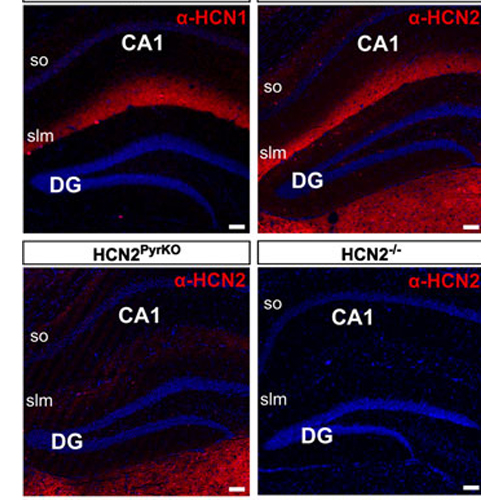HCN2 channels in local inhibitory interneurons constrain LTP in the hippocampal direct perforant path
10-Jul-2010
Cellular and Molecular Life Sciences, 2011, doi:10.1007/s00018-010-0446-z, published on 10.07.2010
Cell. Mol. Life Sci., online article
Cell. Mol. Life Sci., online article
Neuronal hyperpolarization-activated cyclic nucleotide-gated (HCN) channels are known to modulate spontaneous activity, resting membrane potential, input resistance, afterpotential, rebound activity, and dendritic integration. To evaluate the role of HCN2 for hippocampal synaptic plasticity, we recorded long-term potentiation (LTP) in the direct perforant path (PP) to CA1 pyramidal cells. LTP was enhanced in mice carrying a global deletion of the channel (HCN2−/−) but not in a pyramidal neuron-restricted knockout. This precludes an influence of HCN2 located in postsynaptic pyramidal neurons. Additionally, the selective HCN blocker zatebradine reduced the activity of oriens-lacunosum moleculare interneurons in wild-type but not HCN2−/− mice and decreased the frequency of spontaneous inhibitory currents in postsynaptic CA1 pyramidal cells. Finally, we found amplified LTP in the PP of mice carrying an interneuron-specific deletion of HCN2. We conclude that HCN2 channels in inhibitory interneurons modulate synaptic plasticity in the PP by facilitating the GABAergic output onto pyramidal neurons.











